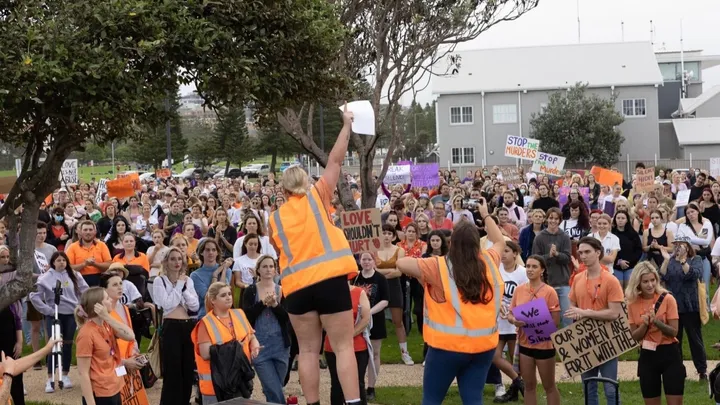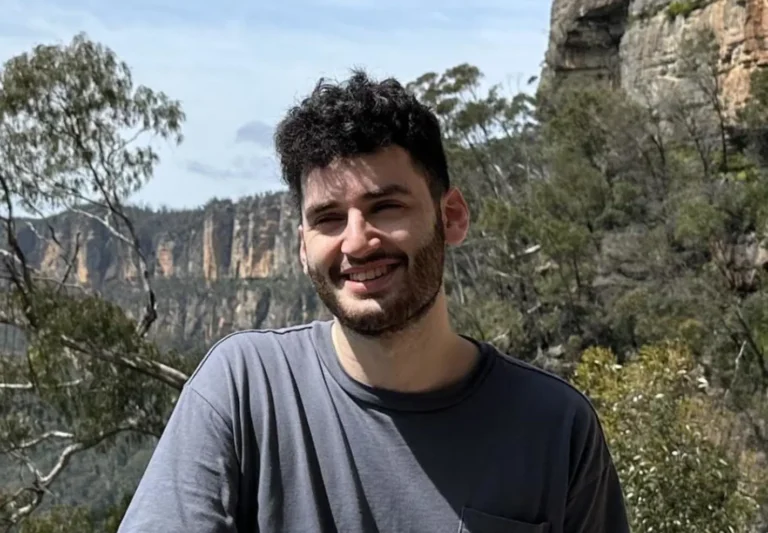
Future water: desalination or preservation?

by ALEC SMART
The NSW Government Water Minister, Melinda Pavey, has directed the operators of Sydney’s desalination plant to expand the premises as soon as possible to cope with the ongoing drought. The plant, near Captain Cook’s landing place in Kurnell on the southern side of Botany Bay, will double in size and output to provide more than 30% of Sydney’s drinking water.
“The expansion of the plant should be undertaken as quickly as practicable and in a prudent and efficient manner to deliver at least an additional 250 megalitres of drinking water per day averaged over a 12-month period,” Ms Pavey said.
Droughts
Currently Sydney’s primary drinking water supply comes from Warragamba Dam south-west of Sydney. However, water levels in the dam have depleted to 43.1 per cent, a level not seen since 2004 during the Millennium Drought.
The Millennium Drought, believed to be the worst since European settlement of Australia, commenced with low rainfall in 1997 and was not reversed until La Niña weather conditions in 2010 brought intense rains and some localised flooding to parts of Australia.
The NSW Govt’s 2006 Metropolitan Water Plan identified desalination of seawater as the best means of ensuring water security. “Having the capacity to draw on desalination means that the Government will not need to impose drought restrictions on water use that are more stringent than those imposed when dams levels reached 40% in June 2005,” the report stated.
The last time Warragamba Dam reached 100 per cent capacity was 1998, although the lowest level recorded was 33.8 per cent in Feb 2007.
The Millennium Drought led to the creation of six major seawater desalination plants around Australia.
The Kurnell plant, opened in Jan 2010 and powered by a wind farm in Bungendore, near Queanbeyan, is the only one in NSW and is jointly owned by a private consortium of three: Ontario Teachers’ Pension Plan Board of Canada, Utilities Trust of Australia (Morrison & Co.) and The Infrastructure Fund (Gardior Pty Ltd).
In mid-2012, as dam water levels rose after the Millennium Drought abated, the desalination plant was switched off. In Aug 2014 the Daily Telegraph reported it cost taxpayers $390 million – $534,246 per day – to sit idle during the previous two years.
The NSW Liberal-National Coalition government agreed this price with the owners when they set the terms of the 50-year lease upon privatisation in 2011. To decommission the desalination plant would cost an estimated $50 million.
The plant wasn’t reactivated again until January 2019, so during the six-and-a-half years it remained in limbo it probably cost taxpayers $1270million.
Water efficiency
Independent NSW MP Justin Field is critical of the NSW Govt’s economic rationale for enlarging the desalination plant, which will likely see an increase in water rates to pay for the expansion. In Dec 2019 he declared “Sydney Water’s 2019 Water Conservation Report shows the failure of the NSW Coalition Government to take Sydney’s water crisis seriously…
“Since 2011 overall and per person, water use is higher, water recycling is lower, leakage rates are higher and now represent 9% of all water used in Sydney. We’re in the middle of the worst drought on record and the NSW Government is still not taking water efficiency and recycling seriously.”
Field has called on NSW Water Minister Melinda Pavey to set clear targets for recycling and water efficiency and to take the $2.5billion in royalties they will receive from Sydney Water (a state-owned corporation that provides drinking water to five million people across Sydney, the Blue Mountains and the Illawarra) over the 2018-2021 years, and redirect them into major recycling infrastructure to improve water security for Sydney.
Field told City Hub “Sydney Water as a state government-owned corporation is managed as a business… The reality is that this money could be easily directed by the shareholding ministers into more water recycling and efficiency programs and fixing inefficient infrastructure like the leaking pipe network (leaks account for about 9% of all water use in Sydney).
“If this had of been done over the last few years it would be possible that expanding the desalination would not be necessary. We’d certainly have more water in the dam so the trigger in the Metropolitan Water Plan to start desal expansion planning would not yet have been reached.
Conceivably the govt could make a direct capital grant to build the desal, but in practice that’s not how water infrastructure is priced and paid for. The standard is for the pricing regulator to set an efficient price and for that to be added to customers’ bills.
“Water recycling would typically treat waste water and reuse if for suitable purposes. At one extreme, sewage can be treated to a potable standard and reintroduced into the water supply system. Other examples are having separate potable and grey water systems put into new homes so grey water can be minimally treated and reused in toilets or put on gardens.
“There are also contained schemes that recycle commercial-scale quantities of used water and repurpose for watering parklands or being reused in industry. There are so many options but you can see from the most recent Water Conservation Report that almost no new water recycling has been built since this Government came to office.”
Water restrictions now imposed
While dam levels usually need to drop to 40 per cent before level 2 water restrictions are imposed, on 10 Dec the NSW Govt implemented them on greater Sydney, Illawarra and Blue Mountains regions after the driest November on record.
NSW was declared 100 per cent in drought in 2017 before the severe bushfires decimated millions of hectares of forest.
“Given the rapid rate of decline of our dam levels we have decided to enact the next level of restrictions sooner than planned,” NSW Premier Gladys Berejiklian said in a statement released in Dec 2019.
“We are experiencing one of the most severe droughts on record and we expect introducing level two restrictions to save 78.5 gigalitres of water per year.”
It is anticipated that level 3 restrictions will be implemented this year. Under level three restrictions, the limits on what time a garden can be watered using a bucket or watering can will be lengthened to before 9am and after 6pm (they are currently restricted to before 10am and after 4pm) and shower use will also be limited to under five minutes.
Level 3 restrictions are already in place for drought and fire-affected areas in Port Macquarie. Stringent water restrictions operate in more arid parts of NSW, including level 4 in Dubbo and level 5 in Orange. The latter regulates the days that different house numbers on a street are allowed to use water during reduced time periods.
Independent MP Justin Field is also critical of the water restrictions imposed by the NSW Govt. In a Nov 2019 opinion-piece in the Sydney Morning Herald, he said: “Not only is the city facing tighter, level 2 water restrictions as dam levels crash, residents could now be paying more for the privilege. But given the NSW government has been taking $500 million a year in dividends out of Sydney Water, the question many would have been asking is: ‘Haven’t I paid for that already?’
“The idea of using the good times to prepare for the tough times has been lost on consecutive NSW governments and here we are again, surprised by drought, having failed to invest in meaningful water security projects, while old leaking pipes lose 110 million litres a day into the ground…
“Special powers were used in August to increase water transfers from the Shoalhaven. To date 50 billion litres have been transferred and the Shoalhaven River is flowing at just 20 per cent of the historical average.
In the midst of a drought, with dams falling fast, it seems Water Minister Melinda Pavey is worried that pushing down water use will hurt cash flow and cramp the ability of Sydney Water to deliver half a billion dollars to the government in dividends. Using less water is bad for the water business.
“We can’t blame Sydney Water, though. The legislation it operates under and its operational licence don’t require it to use water efficiently and sets no targets for reducing water use, recycling or fixing leaking pipes. Its mandate is first and foremost to make money for the government.
“The government is not taking water security in Sydney seriously. Level 2 water restrictions is the right first move but the government should mandate clear targets for Sydney Water in terms of water recycling, per-person water use and leakage reduction. Then it should redirect its annual $500m in dividends to those projects until the targets are met…”
Ash choking dam
Another issue affecting the drinking water from Warragamba Dam is large deposits of bushfire ash that has settled in the catchment area. Stuart Khan, a water quality security expert and environmental engineer from the University of NSW, warned of the health and safety risks.
“The situation in Sydney is really serious. Having a reservoir full of soil and sediment and ash is in itself a real problem, because it makes water treatment processes more difficult.”
High levels of sediment block the filtration process, especially in regional areas where the infrastructure is outdated. In Dec 2019 it was revealed that residents in Tenterfield in north-eastern NSW, had been boiling their water for several months.
“Across the east coast of NSW, almost all of our water supply is surface water,” said Khan. “The way we protect catchments is having forested areas around them. If there is a bushfire in the catchment, it affects that protection.”
Furthermore, ash is made up of organic carbon, which, when diluted in significant quantities, depletes oxygen levels in water. Lower oxygen levels increase the possibility of toxic blue-green algae forming, and also kills fish, which in turn upsets the ecological balance of a river or lake.
Toxic sludge factor
In Dec 2019, the ABC revealed that metallic sludge, a by-product of coal mining, was contaminating Cataract and Cordeaux dams in the Macarthur region in Sydney’s south-west, where residents have no access to desalinated water from the Kurnell plant.
The data, obtained by the ABC under Freedom of Information (FOI) laws, revealed dozens of samples taken from deep in Cordeaux Dam and Cataract Dams between 2017-19 by WaterNSW (a state-owned corporation established in 2014 to operate NSW’s rivers and water supply systems), revealed elevated levels of iron and aluminium.
Acceptable limits in Cordeaux and Cataract dams were breached more than 90 times in those three years, whilst neighbouring Avon Dam exceeded just three times in the same period.
Western Sydney University scientist Dr Ian Wright, who specialises in research into urban water quality, told ABC the results were “shocking.”
“It’s a very viscous, runny sort of mud at the bottom of these reservoirs. Inside this sludge there are salts and minerals, there is iron, aluminium and manganese. There is lithium, strontium, barium, titanium. There is going to be zinc and nickel.”
Excessive aluminium consumption has been found to seriously impede memory and other metals impact upon health.
=============================
WATER RESTRICTIONS IN FORCE
Severe water restrictions are now in place across NSW to deal with the ongoing drought, and these affect both personal and business use. Businesses in Sydney, Illawarra and the Blue Mountains that need to use drinking water outside must apply for a Level 2 Water Exemption permit by 31 January.
Thereafter, any businesses or individuals found to be violating the rules will face fines: $550 per business, $220 per person.
There are also indoor water uses that are subject to the same restrictions, and these include fountains in shopping malls, pools in swimming centres and gyms, and car washing operations in shopping centre car parks.
Water excluded from the restrictions includes ‘grey water’ (recycled bath, laundry or dishwashing water), rain water (so long as the tank doesn’t draw supplementary drinking water when it runs low), bore water and recycled water (supplied in some parts of Sydney through purple pipes).
Home restrictions:
* Gardens can only be watered before 10am and after 4pm with a watering can or bucket.
* Automated irrigation systems, ranging from sprinklers to those with soil moisture sensors, can only be employed for 15 minutes before 10am and after 4pm.
* Hosing hard surfaces is not permitted, unless in an emergency or for health and safety reasons (such as dampening dust).
* You will need a permit before filling a pool over 500 litres.
* Cars can only be washed with a bucket of water or at a commercial car wash that has a legal exemption.
Permitted under level 2 water restrictions:
Commercial car washes
* Wash vehicles using a bucket and sponge less than 100 litres of drinking water for each vehicle washed.
Public lawns and gardens
* Water lawns and gardens before 10 am and after 4 pm for a maximum of 30 minutes a week per area, using a hose fitted with a trigger nozzle or sprinklers and smart watering systems.
Plant nurseries and market gardens
* Water plants with a watering can or bucket before 10 am and after 4 pm.
* Water plants with either drip irrigation or a ‘smart’ watering system for a maximum of 15 minutes per watering zone per day, before 10 am and after 4 pm.
Construction and property maintenance
* Use water to spot clean for health, safety or emergency reasons using a bucket or watering can, a hand-held hose fitted with a trigger nozzle or high-pressure cleaning equipment.
* Wash garbage bins using a bucket or a hand-held hose fitted with a trigger nozzle.
* Wash windows or other glass surfaces with a bucket or engage a window cleaner with an exemption permit
* Use a hose to suppress dust but only where no other water source is available.
* Use water to mix, apply and clean construction materials where no alternative source is available, using a bucket, hand-held hose with a trigger nozzle or an automated batch mixing plant. You must not leave hoses unattended at any time.
Plumbers
* Use water to conduct initial testing or flushing of pipes if required in the normal course of works.
Vessels and maritime activities
* Wash vessels after use in seawater, for 10 minutes using a hand-held hose fitted with a trigger nozzle.
* Flush the motor of a boat or other vessel with a suitable container fitted with a trigger nozzle.
* Use water to clean bilges and safety components of boat trailers with high pressure cleaning equipment or a hand-held hose fitted with a trigger nozzle.
* Wash trailered vessels and/or trailers using a bucket and sponge or at a commercial wash facility.
* Fill water tanks on a boat using a hose, as long as you don’t leave the hose unattended or allow the tank to overflow.
* Hoses at boat ramps must be fitted with trigger nozzles and connected to a timer that shuts off the water after 10 minutes. This is the responsibility of the boat ramp owner.
===============================









